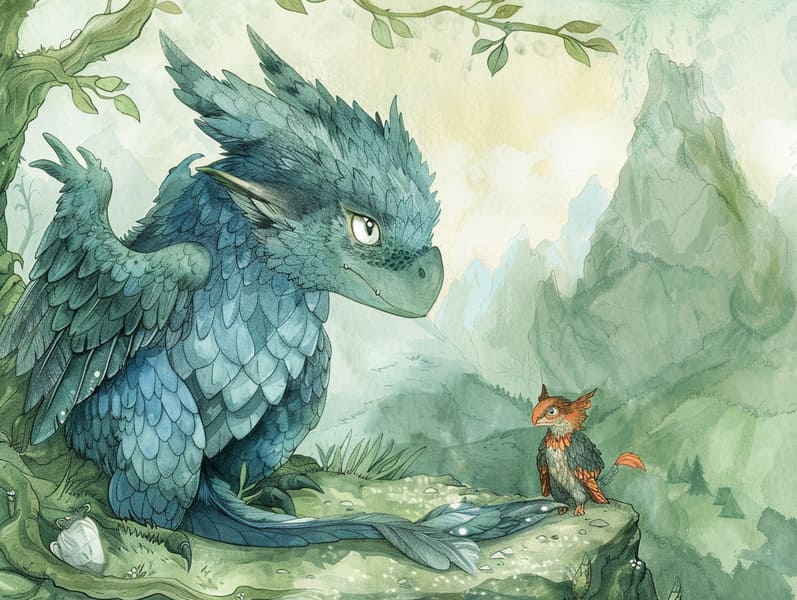A Brief History of Bedtime Fairy Tales with Its Unending Attraction.
A Brief History of Bedtime Fairy Tales with Its Unending Attraction.
Blog Article

Grimm's fairy tales have long histories. These tales have been transmitted from one generation to the next far before they were ever transcribed. They arose from a variety of societies, including Indigenous traditions. They were initially transmitted among elders, often carrying themes and messages related to the societal norms and beliefs of the time.
The Grimm brothers, Jacob and Wilhelm (the Grimm brothers), were among the first to gather and publish many of these beloved narratives. Their published works, "Grimm's Fables," included narratives like "Ashenputtel," "The Bread Crumb Trail," and "Schneewittchen," which have since become classics in the world of children's fairy tales. Similarly, Hans Andersen's delightful tales, such as "The Mermaid," and "The Duckling's Story," have captured hearts worldwide, ensuring their place in the pantheon of famous fairy tales.
Despite their age, these tales remain as important as ever, especially as children's bedtime stories. These enchanting tales are now available in diverse formats, including artistically illustrated books, whimsical animations, and free fairy tales online.
Their unwavering allure can be connected to several fascinating points:
Crucial Morals: Classic fairy tales often illustrate important moral lessons. Stories like "The Wolf and the Liar" teach the virtue of honesty, while "The Tale of the Tortoise and the Hare" exemplify the values of perseverance and humbleness. These stories offer little ones clear distinctions between ethical and unethical, shaping their moral compass in a subtle yet lasting way.
Compassion and Knowledge: Traditional fairy tales frequently showcase heroes facing problems and hurdles, provoking kids to connect with their struggles and celebrate their triumphs. For instance, "Beauty's Beast" conveys the necessity of seeing beyond the surface to acknowledge the inner spirit of a being, cultivating awareness and comprehension.
Cultural Perception: Many fairy tales are saturated in the cultural contexts from which they originated. Learning from these fairy tales can provide enlightening views into different heritages, promoting a sense of world awareness and comprehension.
Fantasy and Innovation: The whimsical elements in old fairy tales—spells and potions—generate children’s fantasies. These narratives transport readers to magical realms, motivating fantastical thinking and a sense of excitement that stays a lifetime.
Traditional fairy tales are not only bewitching but also enlightening. They act as magical tools in advancing various cognitive and emotional skills in little ones. When old fairy tales are told out loud, they promote communication skills by bringing new vocabulary and complicated sentence structures. This practice also nurtures hearing abilities and mindfulness, as little ones listen intently, prepared to see what happens next.
Furthermore, contemplating the themes and characters of classic fairy tales can cultivate thought processes and thought processes. Young ones are led to spot patterns, forecast, and get cause and effect. These discussions also contribute to little ones verbalize their thoughts and feelings, adding to their emotional intelligence.
In today’s technological age, the abundance of free fairy tales online has made these tales more reachable than ever. Online resources and programs supply ample collections of bedtime fairy tales that can be browsed or listened via anytime, anywhere. Fairy tales spoken are particularly sought after, presenting an fun way for the young to delight in these bewitching tales. Sound books and read-aloud videos guide characters and settings to life, often supplemented by magical sound effects and songs that raise the storytelling journey.
The timeless charm of classic fairy tales lies in their ability to change to present days while keeping their core messages. Contemporary modernizations of these narratives often feature more inclusive characters and modern settings, making them meaningful to today’s audience. However, the basic principles of boldness, understanding, and integrity remain unchanged, continuing to impact children of all ages.
Classic fairy tales also offer a sense of reassurance and familiarity. They put out a organized narrative with a recognizable beginning, middle, and end, often concluding with the solving of conflicts and the triumph of virtue over wickedness. This dependability can be consoling for the young, yielding a sense of consistency in an constantly changing world.
Timeless fairy tales continue to captivate and teach new generations, maintaining their attraction and pertinence in modern society. As kids' bedtime tales, they extend a perfect blend of magic and knowledge, developing moral values, empathy, and creativity. The existence of web-based fairy tales and the in demand status of fairy tales narrated warrant that these classic narratives remain obtainable to new generations.
By safeguarding and disseminating these stories, we continue to pay tribute to the rich tapestry of fables and cultural heritage. Whether you are reading a beautifully illustrated book, experiencing a cyber library, or playing an read-aloud book, the spell of Grimm's fairy tales is always within reach. These tales demonstrate of the persistent click here impact of narratives and its ability to gather us across epochs and places.
Even if you are seeing a vibrantly illustrated book, discovering a digital collection, or playing an narrated book, the charm of traditional fairy tales is always within reach.
These stories point out of the perpetual impact of narratives and its ability to bring us together across eras and regions, establishing a link that charms and informs alike.